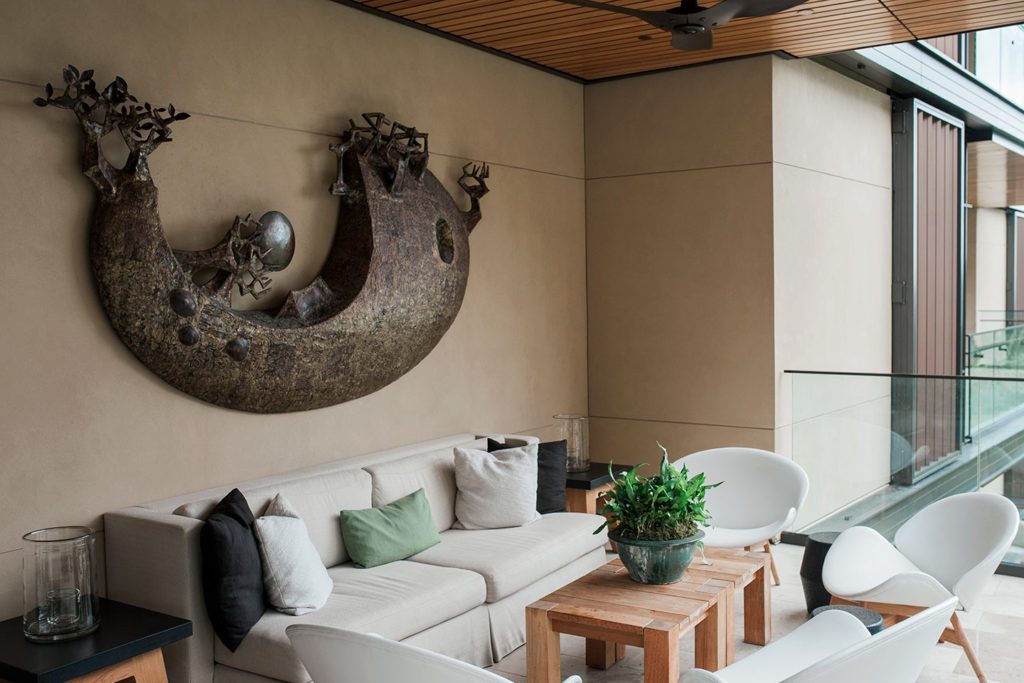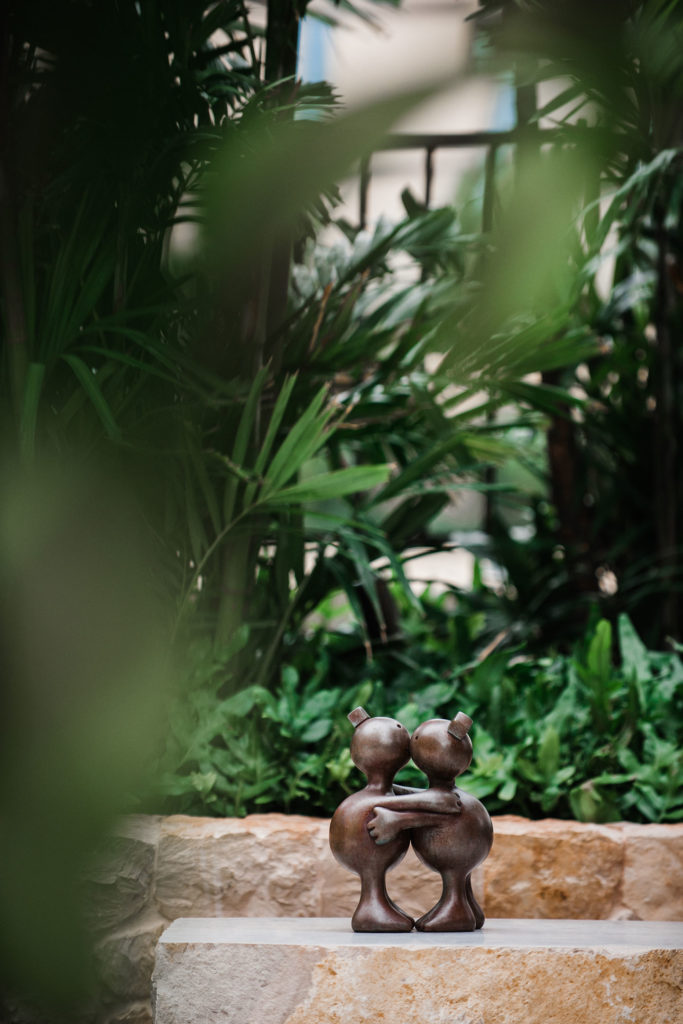Text by Lisa Yamada-Son
Images by John Hook
Out of the half-dozen pieces on loan to the Honolulu Museum of Art for its groundbreaking Abstract Expressionism: Looking East from the Far West exhibition, Nancy Conley misses “Winter Mist” most. The soft-hued oil-on-canvas, painted by Ralph Iwamoto in 1958, serves as the nexus of the art collection she owns with her husband, Herb. It is also an exemplary representation of the group of a dozen or so Hawai‘i-born, Asian-American artists who traveled to New York in the 1950s and pioneered the abstract expressionist movement in the islands.
“‘Winter Mist’ incorporates so many elements of the group,” Nancy says. The spiky branches allude to sculptures by Satoru Abe. The paint drippings are reminiscent of creations by Tetsuo Ochikubo. The feathered blue strokes mimicking lapping water are a constant feature in Tadashi Sato’s paintings.

All of these artists are featured in the art collection of the Conleys. Comprised of more than 300 works by 59 artists who were either born in Hawai‘i or completed their works here, it is one of the islands’ most substantial. Private collections like this are important because they support the work of society’s most imaginative individuals.
“Artists are the change-makers,” Herb says. “If accountants like me ruled the world, everything would be grey and blue, and nothing would change. … Collectors have, in a sense, replaced the benefactors of the old days, because if an artist knows that they have people who will buy their work every year, that gives them a base, and a freedom.”
The Conley’s collection documents Hawai‘i’s rich history in contemporary art, starting with a piece by Isami Doi, who studied art at Columbia University in the 1920s and served as a mentor both artistically and philosophically to the likes of Abe and Sato.
It was at a retrospective of Sato’s work in 2002 at the Honolulu Museum of Art’s Spalding House, known then as The Contemporary Museum, where Nancy worked as a librarian, that the Conleys were charmed by Sato himself. Afterward, the Conleys decided to acquire one painting by each of the handful of locally born Asian-American abstract expressionist artists working in New York in the 1950s.
“You’d meet one guy, and he’d say, ‘Well, have you seen these three people’s works?’” Nancy recalls. “Then we’d go off in that direction.” Pretty soon, their collection grew to include the work of Hawai‘i-based contemporary artists like John Koga (a mentee of Satoru Abe), Deborah Nehmad, Sanit Khewhok, and a number of up-and-coming artists of the following generation.
“I love passion in any form,” says Herb, who notes that his desire to collect art was jumpstarted after discovering the fervent perseverance with which the Hawai‘i-born artists approached their work. “If you think about what their parents did to come here so their kids could have a better life, I would bet that ‘artist’ was not in the top hundred professions of what they would want their children to do,” he says.
“Here they are, firstborn, mostly sons of Asian parents in Hawai‘i, willing to be disowned to follow their passion. So now they go to New York and learn to paint, and son of a gun, there’s this little movement called Ab Ex’ that’s catching everyone’s attention. So then when they come home and talk to their parents, not only are they not painting palm trees and beach scenes, they’re artists painting lines and squiggles. Now you get disowned twice!”
The artists that make up the foundation of the Conley’s collection—including Harry Tsuchidana, Jerry Okimoto, Robert Kobayashi, and Toshiko Takaezu—were caught up in the abstract expressionist movement that was made famous by the New York School of artists including such notable painters as Willem de Kooning, Jackson Pollack, and Mark Rothko.
“And yet they wanted to do their own version with what was going on at the time,” Herb says. “They were not followers, they were leaders, and that may have been why they have not got the national recognition.”
Despite this lack of recognition, their art has earned its place in the backdrop of the abstract expressionist movement. Hanging alongside creations by blue-chip contemporaries like Robert Motherwell and de Kooning at the Abstract Expressionism exhibition at the Honolulu Museum of Art, work by these Asian-American artists showed how they impacted that of their famed counterparts. Clearly apparent, says Herb, was how the New York School was influenced by the abstract nature of the Asian artists, most notably through Japanese calligraphy. (Note the fluid strokes of work by Robert Motherwell).
As it has since then, the work of artists in Hawai‘i remains on par with that of the global art elite. “Good art is good art,” says Kelly Sueda, who curated the more than 500 original creations that comprise the Park Lane collection. “Whenever I put together a collection, I always try to mix blue-chip, internationally famous artists with the best regional art that I can get.”
The collection at Park Lane is one of the largest, if not the largest, assemblages of art in the state outside of a museum. It includes work by local artists like painter Peter Cole, glass artist Jonathan Swanz, and photographer Wayne Levin, intermingled with sculptures by Tony Cragg, Jaume Plensa, and Tom Otterness, and prints by Andy Warhol, Jasper Johns, and Yayoi Kusama.
“It shows the caliber of artwork that is coming out locally can stand up next to a world-class piece of art,” Sueda says.
Support of the local art market is important to Herb as well. “Art is the creative juice of society,” he says. “It gets us thinking, and it keeps us focused on always evolving.”


















